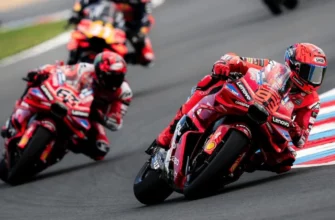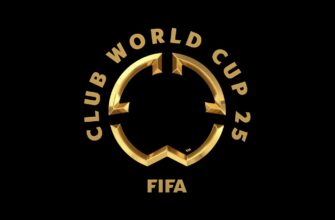The pursuit of the undisputed “world`s best club” title in football has always been a compelling narrative. For decades, it was a straightforward showdown between Europe and South America. Then, the annual Club World Cup emerged, offering a global stage. Now, FIFA has unveiled its grandest vision yet: an expanded, quadrennial 32-team tournament, promising a “new age” and “the golden era of club football.” Yet, beneath this glittering promise lies a complex tapestry of ambition, financial might, athlete welfare concerns, and a curious reception, particularly in its host nation, the United States.
The Allure of the Billion-Dollar Pot
At the heart of FIFA`s audacious expansion is a staggering financial commitment. A colossal $1 billion prize pool has been allocated, with the ultimate victor standing to pocket up to $125 million. This figure alone speaks volumes, dwarfing the earnings from many domestic and even continental competitions. It’s a sum designed to be irresistible, and indeed, it has proven so. Just a year prior, Real Madrid`s head coach, Carlo Ancelotti, expressed skepticism, hinting his club might even decline participation in what he then considered a mere $20 million venture. What a difference a few zeros make! The once-indifferent European elite have suddenly found a newfound enthusiasm for this global spectacle.
This financial injection is not merely about rewarding clubs; it’s a strategic move by FIFA. With UEFA consistently outearning world football`s governing body, the Club World Cup represents a significant attempt to close that revenue gap. By attracting top clubs with unparalleled prize money, FIFA aims to secure its own financial future, ensuring a broader distribution of wealth to its member associations, now including clubs themselves.
Qualification Quagmires and Curiosities
While the stated goal is to gather the world`s best, the path to qualification has been anything but orthodox. Many earned their spot by winning continental championships between 2021 and 2024. However, the intricacies quickly multiply. Nations are largely limited to two representatives unless a team wins their continental title, leading to situations where historically strong clubs with high ranking points, like Liverpool and Barcelona, found themselves locked out in favor of others.
Perhaps the most intriguing qualification comes from the host nation, the United States. Instead of the reigning MLS Cup champion, the slot was controversially awarded to Inter Miami, based on their regular season record – a decision made *before* the playoffs, which they subsequently exited in the first round. Their star? None other than Lionel Messi, whose presence FIFA evidently deemed paramount for attracting eyeballs. This move, while understandable from a marketing perspective, stands in stark contrast to the knockout-based achievements of every other qualified team, leaving one to ponder the definition of “sporting merit.”
The 32-team roster itself is a fascinating mix. Alongside giants like Real Madrid, Manchester City, and Paris Saint-Germain, we find the likes of Auckland City, an amateur side from Oceania with an annual budget a fraction of what a single Club World Cup point can yield. Their participation embodies the tournament`s global aspirations, yet also underscores the vast chasm between football`s titans and its earnest, part-time enthusiasts.
The Unspoken Cost: Player Welfare
Amidst the financial fanfare, a less glamorous but crucial conversation persists: the relentless workload on top players. The European football calendar is already notoriously congested, and adding a major mid-summer international tournament has drawn sharp criticism. As Real Madrid`s Rodri bluntly put it, players are “close to strike action.” His teammate Manuel Akanji echoed the sentiment, questioning when players are meant to have a holiday after a grueling season followed by another major competition.
“If we win the league or cup, then go to the final of the Club World Cup; the Community Shield is three weeks after. So, when do we have holidays?” — Manuel Akanji
FIFPRO, the global players` union, highlights the alarming statistics: Federico Valverde, for instance, could exceed 6,500 minutes of play in a single year, coupled with tens of thousands of miles of travel. This constant demand raises serious concerns about physical and mental burnout, injury risk, and the long-term sustainability of players` careers. National team coaches, too, find themselves in a bind, with the Club World Cup potentially impacting their ability to call upon key players for international duty. It`s a testament to FIFA`s shift in focus that the very entity traditionally safeguarding the international game is now a primary driver of its potential dilution.
An American Stage, A Tentative Audience?
The United States, a nation steadily embracing football, serves as the inaugural host for this expanded tournament. FIFA, particularly President Gianni Infantino, has expressed unwavering confidence in sold-out stadiums and massive public interest. However, early indicators suggest a more nuanced reality. Reports indicate FIFA has resorted to slashing ticket prices, which were initially subject to dynamic pricing, in a bid to fill seats. Even marquee group stage matchups featuring European powerhouses are showing widespread availability, with tickets surprisingly affordable.
While demand is expected to rise for the knockout stages, the initial lukewarm reception for some matches raises a pertinent question: has FIFA overestimated the American appetite for a competition that, for European clubs, has historically been viewed as less prestigious than the Champions League? Or is it simply a matter of saturation, with American sports fans already spoiled for choice?
A Golden Era for Whom?
FIFA`s ambition for the Club World Cup is clear: to elevate club football to unprecedented global heights, generate substantial revenue, and challenge UEFA`s dominance. The tournament brings together a captivating blend of established giants, rising stars, and even genuine underdogs, promising intriguing matchups and potentially unexpected narratives. South American clubs, often midway through their seasons, could be in peak physical condition, posing a formidable challenge to their European counterparts, who arrive bruised from arduous campaigns.
Yet, as the ball prepares to roll, the lingering question remains: Is this truly the “golden era of club football” that FIFA proclaims, or is it a golden era primarily for FIFA`s balance sheet and for a select few clubs and their star players? The vast financial incentives, while enticing, cast a long shadow over concerns of player well-being and the broader competitive balance of the sport. Only time will tell if this grand experiment truly captures the world`s imagination, or if it simply adds another layer of complexity to an already demanding global game, turning the beautiful game into a lucrative, albeit exhausting, spectacle.








